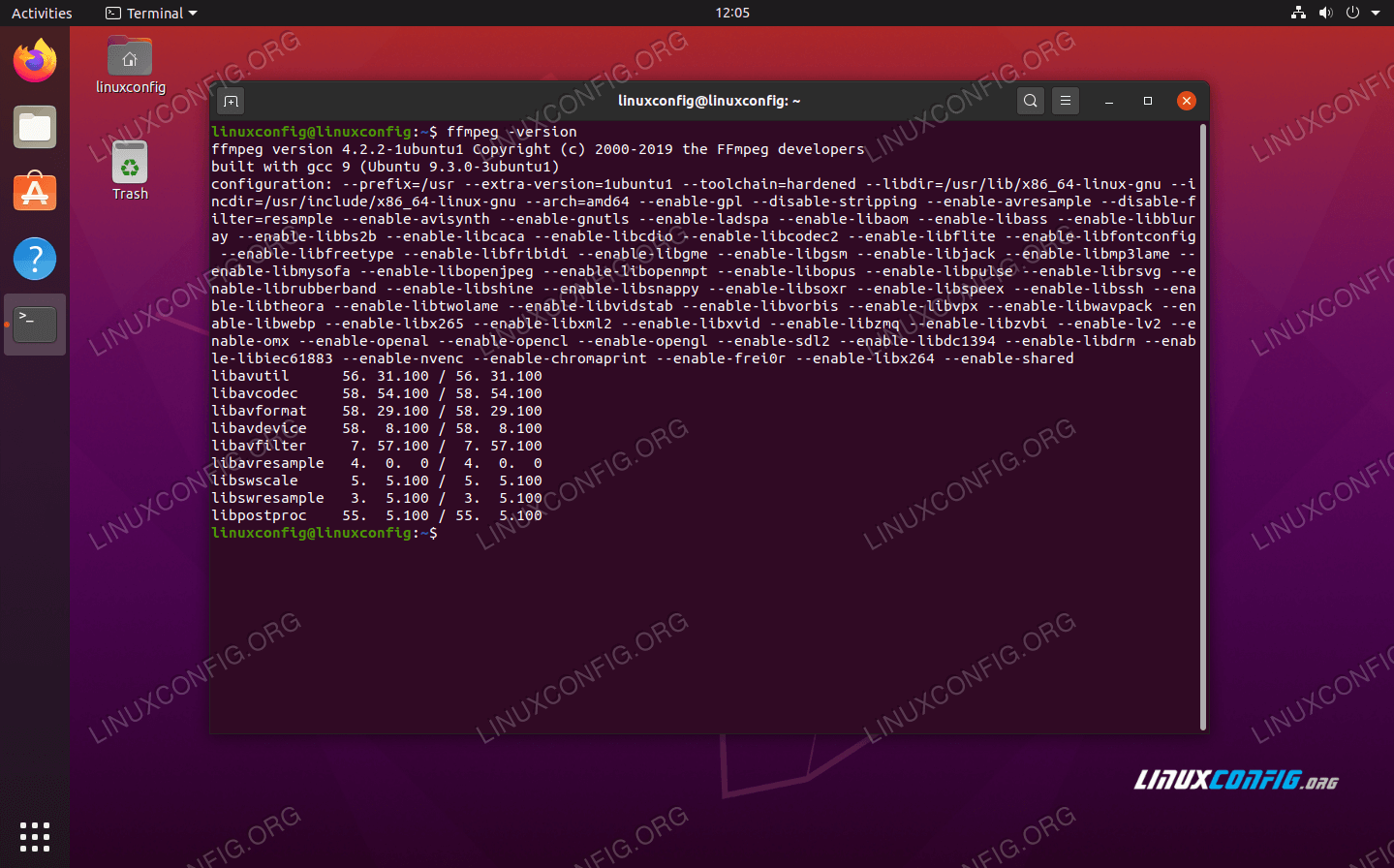

I recently thought up some ideas on how I’d like to use FFmpeg, so I thought it was time to give it a try yet again. Today, I’m going to see if I can’t help you get both of these set up on your system.Īdmittedly, it’s been a while since I’ve tried to install FFmpeg, about two years.

There’s also a great PHP package called ffmpeg-php that allows for easy use of FFmpeg from inside PHP scripts. However, it can also transcode video and audio (convert the files to different formats), and that is what has me so excited. Rebuild your secure website today with our CentOS Cloud Server Hosting.FFmpeg is an amazing collection of open-source tools that can record and stream video and audio. Check your FFmpeg version: ffmpeg -version.Install FFmpeg with YUM: sudo yum install ffmpeg ffmpeg-devel.Install RPM Fusion: sudo yum localinstall -nogpgcheck.Install the the EPEL software repository: sudo yum install epel-release.To install FFmpeg on CentOS with EPEL and RPM Fusion: Whether you’re trying to figure out how to install FFmpeg on cPanel servers or unmanaged cloud servers, below we’ll cover how to: For the latest FFmpeg version, you’ll need to install FFmpeg from source code or email our 24/7 Live Support to request a free installation on your managed VPS or dedicated server. The RPM Fusion repo for FFmpeg is behind the latest version available. The easiest way to install FFmpeg on CentOS is with the EPEL (Extra Packages for Enterprise Linux) repository, which provides more software packages than are available in CentOS by default, and RPM Fusion which includes the FFmpeg repo. FFmpeg is a cross-platform command line interface (CLI) audio editor and video editor with a long range of possibilities for recording, streaming, and converting media files to your preferences.


 0 kommentar(er)
0 kommentar(er)
